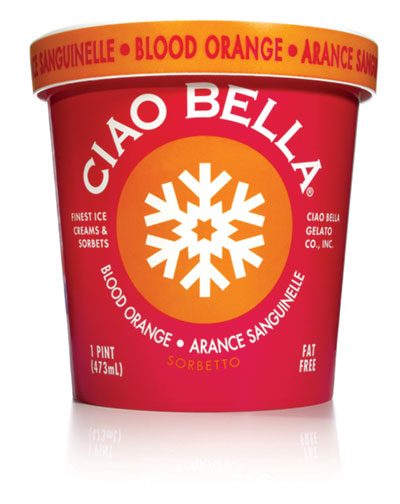
It’s no wonder so many New York chefs consider Ciao Bella’s sorbétto and gelato to be glamorous New York products. Ciao Bella (which means, “hello beautiful”) began in Little Italy in 1983 as a tiny storefront with a reputation for selling custom flavors to white-tablecloth restaurants in downtown Manhattan. The image has stuck, even though Ciao Bella’s factory and business offices moved in 1999 to large modern quarters on 40th Street in Irvington.
Ciao Bella’s transformation began ten years earlier when a twenty-something named F. W. Pearce bought the 300-square-foot shop from its original owner for $100,000. The demand for artisan products and authentic Italian was just taking off—and with it an appreciation for gelato (which has less butterfat and air than American ice cream) and sorbétto (Italian for sherbet) made with high-quality fresh fruit. Pearce—who had worked on and off in hotel and food-service jobs since college—was trying to find his way. In Ciao Bella, he saw possibilities. Gelato is difficult for most chefs to make well on premises, so Pearce set to work making the product and expanding its restaurant business.
Over the next decade Pearce added a partner, Charlie Apt, whose business and financial expertise helped develop the charmed brand. The original scoop shop remains in Little Italy to this day, but the Irvington factory has four loading docks and better highway access. Now Ciao Bella is in markets across New Jersey and the United States. Oprah Winfrey has proclaimed the blood-orange sorbétto one of her “favorite things,” and Food Network star Giada De Laurentiis gave the brand her blessing.
The company’s annual sales in 2007? About $15 million. A large part of the credit goes to the brand’s Italian soul—Torino-trained executive chef Danilo Zecchin. He designs flavors for Americans, staying true to the Italian tenets of simplicity, great ingredients, and authentic flavors—not to mention the dense gelato texture that American companies just cannot seem to duplicate. (The trick: imported Italian machines.)
“In America, they put all kinds of cookies and candies in their ice creams,” says Zecchin. “We never put more than two flavors together. One flavor can never step on top of the other. We use less sugar. Less air. Less fat. The flavors come through. It’s all about the balance of flavors.”
To translate these words into memorable sensations, try Ciao Bella blackberry-cabernet sorbétto, which will stun you with its intense fruit accented by mellow wine; or Key lime gelato, a truly tart cream filled with teensy flecks of contrasting sweet graham cracker. The chocolate chip-mint gelato is bracingly minty thanks to fresh mint leaves. The pistachio gelato surprises you with big salty nuts from Turkey, and the espresso is steeped in serious dark roast.
Zecchin is a traditionalist who commutes from his South Orange home by bus or bike. Typically Italian, he adores fresh fruit, and his sorbétti prove it with 70 to 90 percent fruit content, compared with 20 to 30 percent in other brands. He is an ingredient maven—hunting down raspberries from Oregon and coconut from the Dominican Republic.
“When I make mango sorbétto, the first thing I think about is buying a mango,” he says. “When I wanted to make blood-red orange sorbétto, I tried 40 different blood oranges from the U.S. and Europe before I settled on the juice from Sicily. It’s cleaner and more orange. It’s got intense color and flavor. When Oprah said she loved it we ran out, and for a while I couldn’t get the Sicilian juice, so I just didn’t make the product.”
You said no? He laughs. “It’s my job to say no. In Italy, gelato is a religious experience.”
